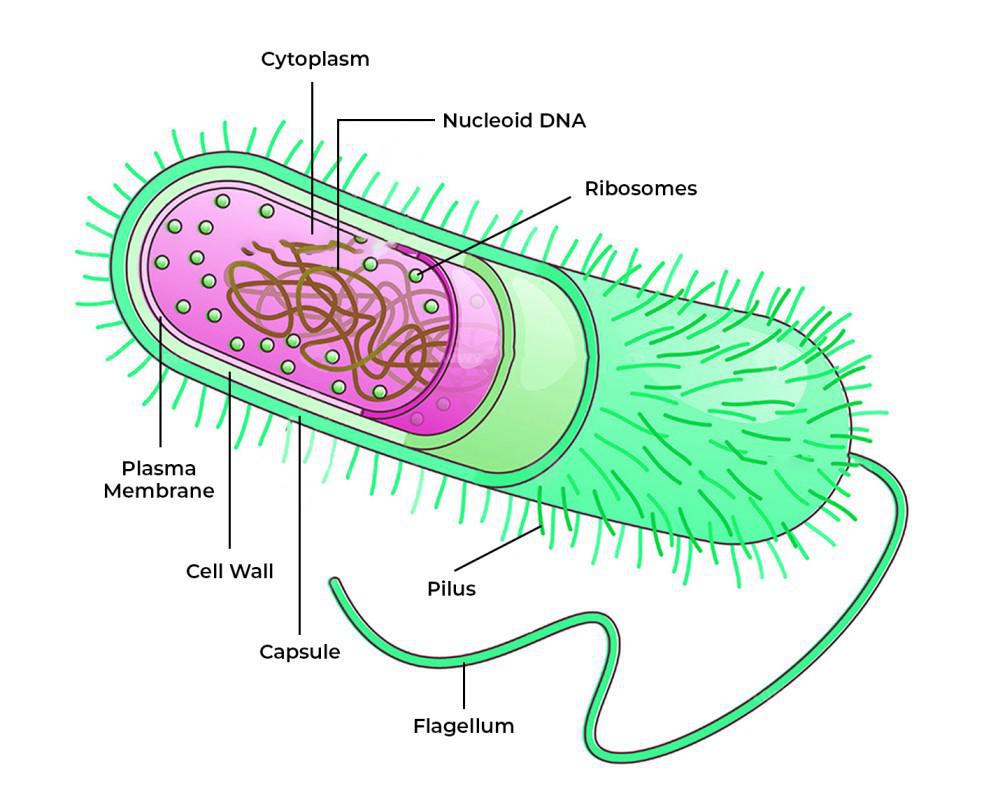Essential Components of the Prokaryote
Prokaryote
A prokaryote is a single-celled organism that lacks a nucleus and membrane-bound organelles. Its genetic material is found in a single, circular DNA molecule located in the nucleoid region of the cell.

The Cell Wall: Cell Protection
Cell wall
The cell wall is a rigid, protective layer located outside the plasma membrane of certain cells, including prokaryotes, plants, fungi, and some protists. It provides structural support, protection, and shape to the cell.
- The cell wall is particularly sturdy due to a thick layer of peptidoglycan, a polymer made of sugars (glycans) and amino acids, forming a rigid mesh-like structure.
- This thick layer not only gives the cell its shape but also serves as a barrier to protect it from environmental stresses.
Gram-positive bacteria stain purple during the Gram staining process because their thick peptidoglycan layer retains the crystal violet dye.
The Plasma Membrane: Determines What Comes In and Out
Plasma membrane
The plasma membrane is the thin, flexible boundary that surrounds a cell, separating its internal environment from the external surroundings. It is composed of a phospholipid bilayer with embedded proteins, cholesterol, and carbohydrates.
- It is present beneath the cell wall.
- The plasma membrane performs several critical functions:
- Transporting Nutrients and Waste: It facilitates the intake of essential nutrients, such as glucose, and expels waste products.
- Maintaining Homeostasis: By regulating ion concentrations, it ensures the cell's internal environment remains stable.
- Energy Production: In prokaryotes, the plasma membrane is the site of ATP production during cellular respiration, as they lack organelles like mitochondria.
Keep in mind that the plasma membrane is fluid and dynamic, allowing proteins to move and adapt to the cell's needs.
Cytoplasm: Site of Metabolic Processes
Cytoplasm
The cytoplasm is the jelly-like substance inside a cell, excluding the nucleus, where various cellular activities occur.
- The cytoplasm is the gel-like substance that fills the interior of the cell, driving the cell's metabolic processes.
- Within the cytoplasm, you’ll find:
- Enzymes that catalyze biochemical reactions.
- Ribosomes that synthesize proteins.
- The nucleoid region, where the DNA resides.
- Unlike eukaryotic cells, prokaryotic cytoplasm lacks membrane-bound compartments, making it a single, open space where all cellular processes occur.
- Avoid confusing the cytoplasm with the cytosol.
- The cytoplasm includes the cytosol (the fluid portion) and all suspended structures, such as ribosomes and DNA.



